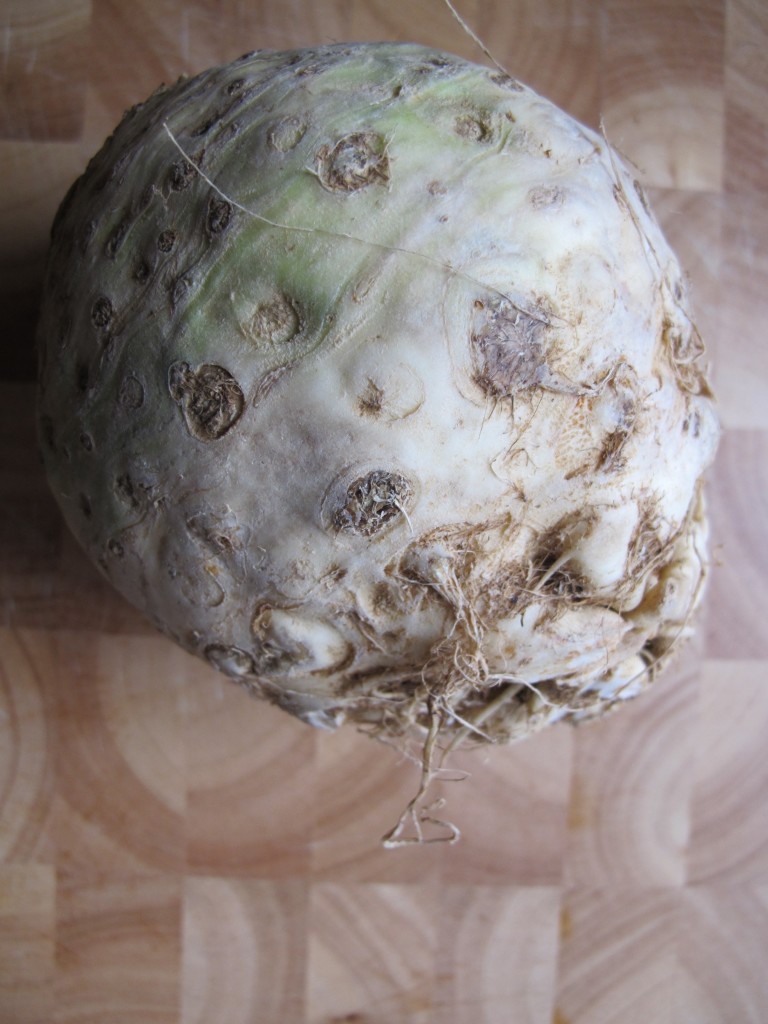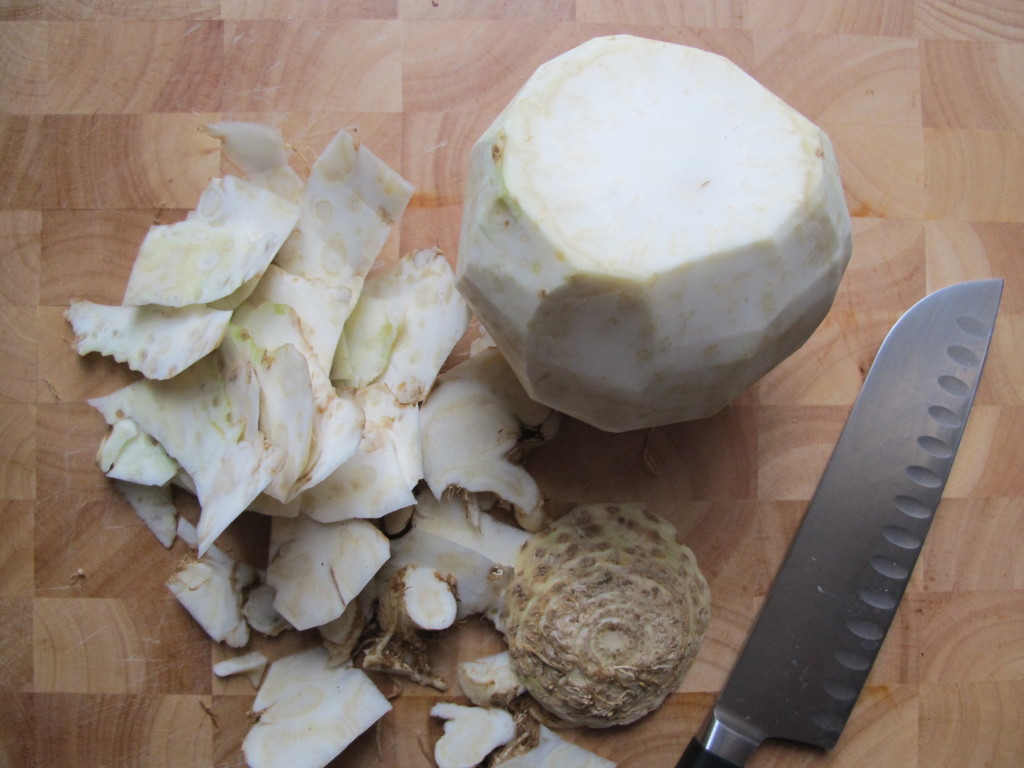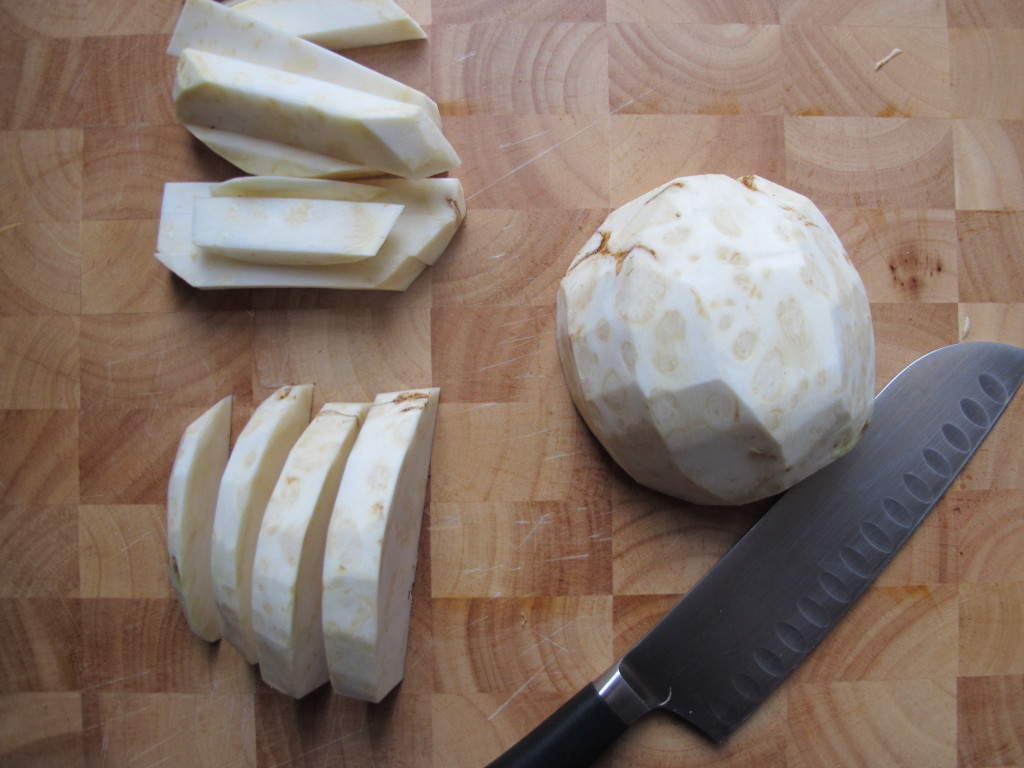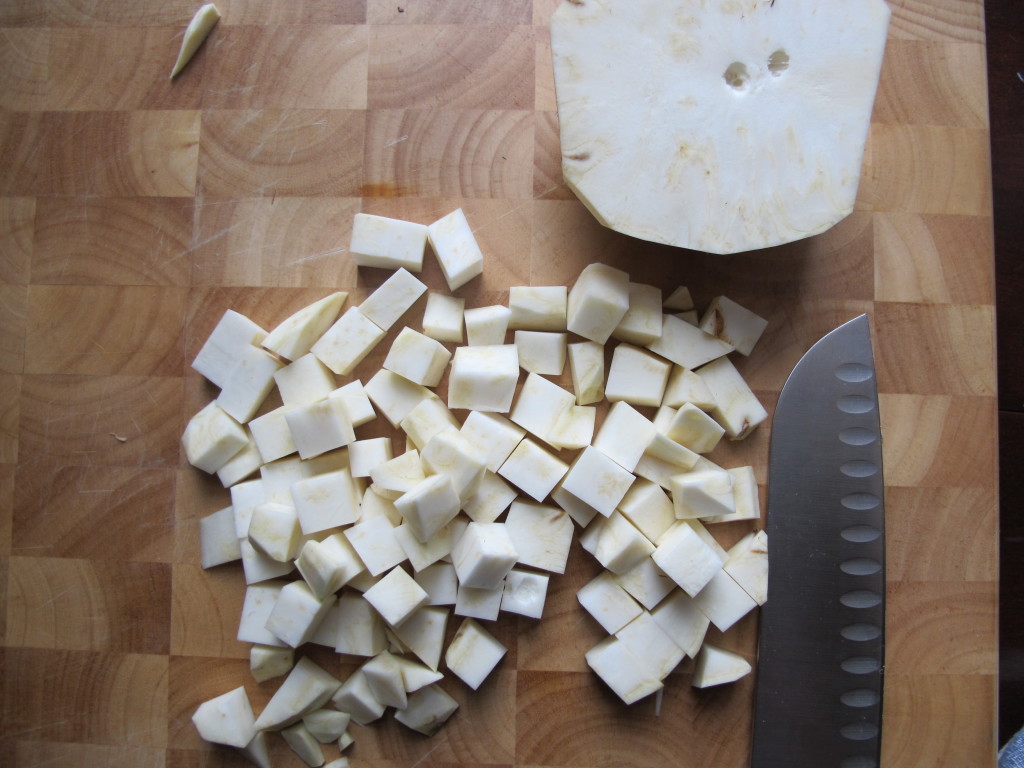
What the Heck is Celeriac?
Heard about it or seen it in the store but don’t what it is or why it’s good for you? Our friendly, fabulous Food Editor
Christine walks us through it.
We’re in the homestretch toward spring and I’m sure I’m not the only one who is pining for warmer weather and the fresh, gorgeous produce that comes along with it.
In the meantime, allow me to introduce you to one of winter’s more underrated vegetables, celeriac (or celery root). Celeriac’s flavor and texture make you think it’s the love child of celery and potatoes. Celeriac is literally celery’s root, but instead of varieties that grow big beautiful stalks, they are varieties selected and cultivated for their roots. It is lower in starch than many root vegetables, helpful for those who need to control the amount of carbohydrates in their diet, a good source of Vitamin K, many trace minerals like copper and phosophorus, and B-complex vitamins. This homely looking root can be a little intimidating with its dinosaur skin and tangle of roots, but once you get to know it’s a creamy, nutty, vegetal flavor, you’ll be using it in almost any dish in which you would use a potato.
Choose celeriac with as smooth a skin as possible, not soft and browning or cracking and dry. It should feel a lot like a big turnip with knobby, slightly leathery skin. They store well in the crisper drawer of your refrigerator for a couple of months if they’re in good shape when you buy them.
Now, here’s how you get to the good part. With a sharp chef’s knife, cut a slice off each end of the celeriac. You are just cutting enough to create a stable base so don’t worry about getting all the root end off yet. Any gnarly bits can easily be trimmed with a paring knife after the root is broken down a little bit. Then, much in the same way I showed you how to peel citrus with a knife to segment it, trim away the knobby skin from top to bottom, following the curve of the vegetable with the knife blade. If you have a small celeriac and a very sturdy vegetable peeler, you can try cutting the root in half and then peeling it with the peeler, but most celeriac are a little large to grip safely and a little tough for a standard vegetable peeler. A sharp knife makes quick, safer work of peeling it.
Once the root is peeled and you’ve trimmed away any unsightly roots, cut the whole thing in half. From this point, the celeriac becomes much more manageable to cut into whatever size you need for your recipe whether it be thin slices for a gratin, grated for a remoulade or slaw, or diced small to cook into soups or as with this recipe, diced with potatoes for a delicious take on mashed potatoes.
To create a dice cut, lay the half flat side down on the cutting board and cut each half into ½ inch wide slices. Again, divide the root into quarters, lay them on their widest flat side and cut each stack of slices in half lengthwise, turn it again, and cut the slices into about ½ inch dice. Because it’s rounded, the pieces won’t be completely even but this is a good way to help ensure that your pieces will cook evenly. This approach works with a lot of big, tough, round vegetables like jicama, turnips or rutabagas, and potatoes.
Simple Celeriac Potato Mash
2 cups diced celeriac
2 cups diced potato
Water to cover
½ teaspoon salt, plus more to taste to finish
4 tablespoons unsalted butter
Milk, cream, or crème fraiche (optional)
Put the diced vegetables in a saucepan and just barely cover with water and ½ teaspoon of salt. Simmer over low/medium heat for about 15 minutes or until the vegetables offer no resistance when pierced with the point of a paring knife, or when crushed against the side of the pot with a fork. Drain whatever water is left. While the pan is still warm, pour the vegetables back in so that they will steam any excess water out; this will help keep the mash from tasting watery. Add the cubes of butter to the pot and stir to melt.
For a rougher mash, more of a “smash,” use a potato masher in the pot to crush the potatoes and celeriac. For a smoother, creamier result, press the vegetables through a potato ricer, food mill, or coarse sieve to get any chunks out. While the risk of ending up with “gluey” mashed potatoes is minimized by the celeriac, be cautious about over-whipping them with electric beaters or a food processor. The best electric tool for mashing potatoes is a beater blade rather than a whisk on an electric mixer. If your mash feels a little dry, add a splash of warmed milk, cream, or room temperature crème fraiche. Salt to taste and serve warm.










